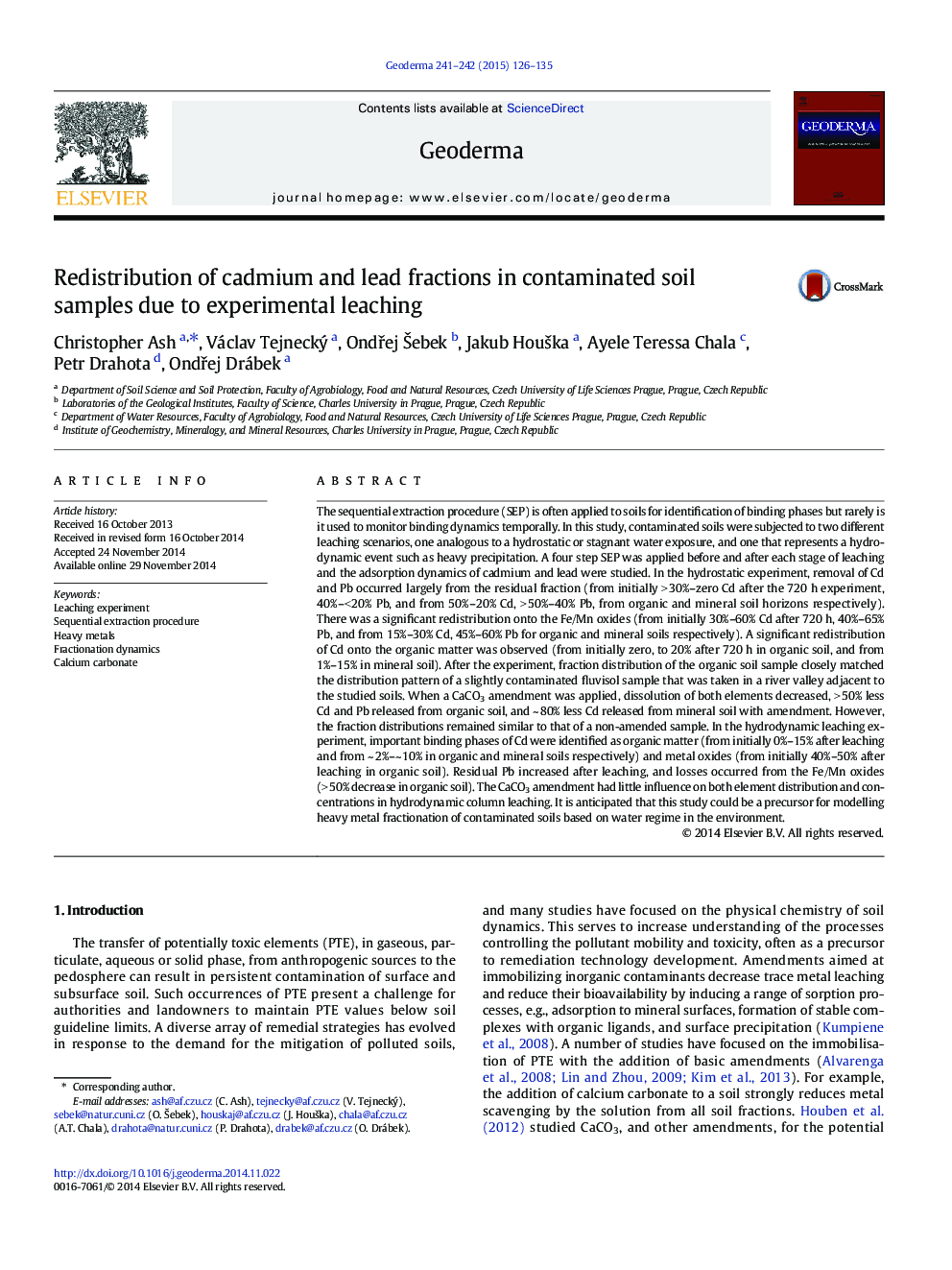| کد مقاله | کد نشریه | سال انتشار | مقاله انگلیسی | نسخه تمام متن |
|---|---|---|---|---|
| 6408595 | 1629465 | 2015 | 10 صفحه PDF | دانلود رایگان |
- Sequential extraction performed on contaminated soil before and after leaching
- Loss of residual Cd and Pb and redistribution onto Fe/Mn oxides in batch experiment
- Oxidizable and reducible fractions important for Cd binding in column leaching
- Increased residual Pb and losses from Fe/Mn oxides after column leaching
- CaCO3 amendment reduced dissolution of Cd and Pb but did not alter fractionation.
The sequential extraction procedure (SEP) is often applied to soils for identification of binding phases but rarely is it used to monitor binding dynamics temporally. In this study, contaminated soils were subjected to two different leaching scenarios, one analogous to a hydrostatic or stagnant water exposure, and one that represents a hydrodynamic event such as heavy precipitation. A four step SEP was applied before and after each stage of leaching and the adsorption dynamics of cadmium and lead were studied. In the hydrostatic experiment, removal of Cd and Pb occurred largely from the residual fraction (from initially >Â 30%-zero Cd after the 720Â h experiment, 40%-<Â 20% Pb, and from 50%-20% Cd, >Â 50%-40% Pb, from organic and mineral soil horizons respectively). There was a significant redistribution onto the Fe/Mn oxides (from initially 30%-60% Cd after 720Â h, 40%-65% Pb, and from 15%-30% Cd, 45%-60% Pb for organic and mineral soils respectively). A significant redistribution of Cd onto the organic matter was observed (from initially zero, to 20% after 720Â h in organic soil, and from 1%-15% in mineral soil). After the experiment, fraction distribution of the organic soil sample closely matched the distribution pattern of a slightly contaminated fluvisol sample that was taken in a river valley adjacent to the studied soils. When a CaCO3 amendment was applied, dissolution of both elements decreased, >Â 50% less Cd and Pb released from organic soil, and ~Â 80% less Cd released from mineral soil with amendment. However, the fraction distributions remained similar to that of a non-amended sample. In the hydrodynamic leaching experiment, important binding phases of Cd were identified as organic matter (from initially 0%-15% after leaching and from ~Â 2%-~Â 10% in organic and mineral soils respectively) and metal oxides (from initially 40%-50% after leaching in organic soil). Residual Pb increased after leaching, and losses occurred from the Fe/Mn oxides (>Â 50% decrease in organic soil). The CaCO3 amendment had little influence on both element distribution and concentrations in hydrodynamic column leaching. It is anticipated that this study could be a precursor for modelling heavy metal fractionation of contaminated soils based on water regime in the environment.
Journal: Geoderma - Volumes 241â242, March 2015, Pages 126-135
